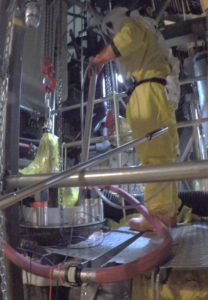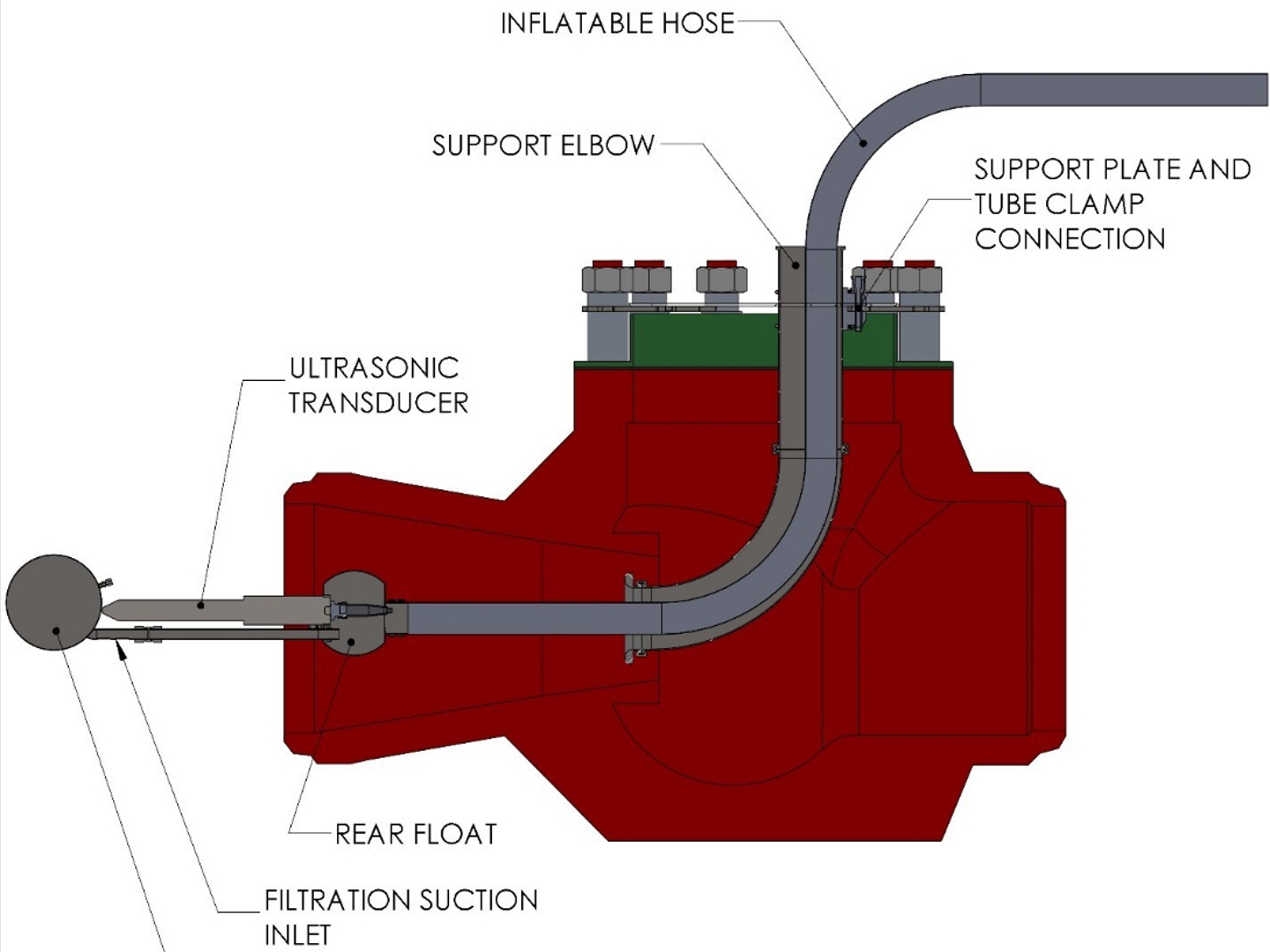Ultrasonic Decontamination Saves 259 person-rem During Valve Maintenance at US BWR
DEI was contracted to develop custom tooling and implement ultrasonic decontamination of reactor recirculation flow control valves at a US boiling water reactor (BWR) in order to reduce worker exposure during planned valve maintenance activities. The tooling developed by DEI included an articulating wand that was inserted through the valve body at various stages of valve disassembly and used to clean the valve internals prior to removal, as well as the interior of the valve body and adjacent piping after internals removal. The wand included an integrated ultrasonic transducer and vacuum wand in order to effectively decontaminate the valve and capture disrupted activity locally.

The ultrasonic decontamination activity was effective in reducing valve and piping dose rates by up to 70% and reduced radiation exposure to workers by 259 person-rem during valve maintenance activities, including disassembly, repair/replacement of internals and reassembly. The ultrasonic decontamination also reduced the potential spread of contamination during handling, repair and replacement of valve internals.
Hydrolazing had previously been considered as a means for cleaning the valve internals, but was descoped based on poor performance in a prior valve decontamination. A key advantage of ultrasonic decontamination is that, unlike hydrolazing, ultrasonic cleaning is not limited to line-of-sight cleaning. Rather, ultrasonic energy creates a cleaning field that effectively cleans around obstructions such as valve internals and in other difficult-to-access areas. Ultrasonic cleaning is also performed with the valve and piping filled with water which provides enhanced shielding during the cleaning activity. Because the valve and piping were filled with water, recirculation was established from the cleaning wand, through a filter system and back to the valve body, allowing particulate to collected in a controlled manner.

The filtration was performed using a skid mounted AMFM-S300 system, with ultrasonically regenerable filter elements. This allowed the activity to be performed without generating any secondary radwaste. At the completion of the ultrasonic decontamination activity, the AMFM-S300 system was ultrasonically backwashed to remove particulate collected during the cleaning activity and reduce the filter dose rates to an acceptable level, facilitating reuse of the filter system.
For more information regarding ultrasonic decontamination or AMFM regenerable filtration systems, please contact info@domeng.com.